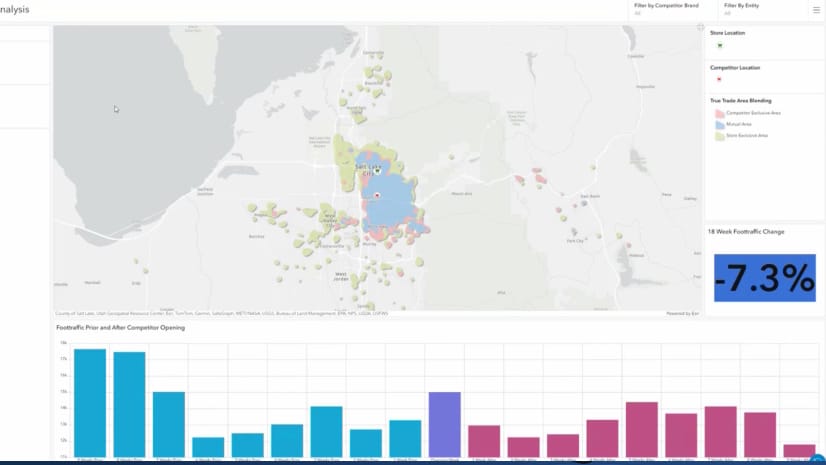Amid an uncertain global economy, businesses and workers are beginning to realize that a significant number of jobs lost during the pandemic may not come back.
One remedy for workers is occupational mobility—leveraging existing skills to move into higher-paying roles with more growth opportunities. This starts with a qualitative understanding of which skills will transfer effectively between jobs, and benefits from a quantitative, location-based view of real-world demand for certain skills in different geographic regions of the country.
To that end, the Federal Reserve Bank of Philadelphia has helped workers with valuable location intelligence on employment opportunities through its Occupational Mobility Explorer, an interactive tool that aims to match workers with upskilled jobs. Workers can search any US metro area to see which skills in lower-wage occupations translate well to higher-paying roles. Equipped with this location intelligence, workers can identify local or national opportunities in jobs that are projected to grow and do not require a bachelor’s degree.
A Growing Need for Occupational Mobility
A strong economic recovery from COVID-19 may hinge on occupational mobility. Around the world, the jobs most at risk for post-pandemic obsolescence are unspecialized and lower-pay, according to researchers and economists at McKinsey Global Institute, the Massachusetts Institute of Technology, and the World Economic Forum. Automation, contraction in industries like dining and travel, and telework will contribute to the loss of these jobs, studies indicate. McKinsey’s report estimates that more than half of unemployed lower-wage workers will need to find higher paying occupations to regain employment.
Location intelligence empowers workers with information that improves their chances of getting hired, such as the number of available jobs in a given area and a sector’s projected growth in the region. This lens is particularly important as lower-income workers are already facing financial strain. For those unable to invest in retraining or education, the opportunity to utilize existing skills in higher-paying, in-demand roles can be both critical and meaningful.
If location-based tools like the Philadelphia Fed’s Occupational Mobility Explorer help lower-income workers grow into higher paying roles, they could provide job stability and relief for individuals and support their household income, which in turn strengthens the broader economy.
Reconsidering Recession Hiring Strategies
During most recessions, jobs become scarce and applicants plentiful: an employer’s market. But the current downturn is more nuanced. While global unemployment remains high, displaced workers are not consistently flocking to available jobs. One factor is hesitance to take front-line positions that may expose workers to COVID risk. Another is geography—and location intelligence can reveal new patterns in regional labor markets that point workers toward the right roles in the right places.
The trend of dedensification hints at geography’s role in labor markets. During the pandemic, people have moved away from business centers in higher numbers to save money and avoid crowded spaces. Businesses located in these hubs may be facing a workforce shortage, which could persist if people continue to reject big-city life for more spacious suburbs or smaller cities. Employers may need to expand their search radius, consider opening satellite work sites in areas with a greater supply of labor, or actively market jobs to local applicants seeking to change careers.
Supporting Local Economies through Skilled and Stable Labor
Connecting people with higher-pay occupations does more than fill gaps in the labor market. It also fosters short- and long-term economic growth and stability, especially among those workers frequently hit hardest by recessions and crises.
For workers, it provides greater fulfillment and opportunity, while businesses secure a skilled, productive, and stable workforce. As the world moves out of the pandemic and economic downturn, occupational mobility informed by location intelligence will be a driving force. A strengthened workforce will reinvigorate communities and help reestablish economic resilience in sectors and regions undergoing the biggest shifts in labor supply and demand.
Editor’s note: WhereNext will soon publish a companion article on “the great decoupling” of labor from physical offices and work sites, with notes on how location intelligence empowers employers to recruit talent in that emerging environment.
The Esri Brief
Trending insights from WhereNext and other leading publicationsTrending articles

December 5, 2024 |

November 12, 2018 |

November 24, 2025 | Multiple Authors |

July 25, 2023 |

November 18, 2025 |

February 1, 2022 |




